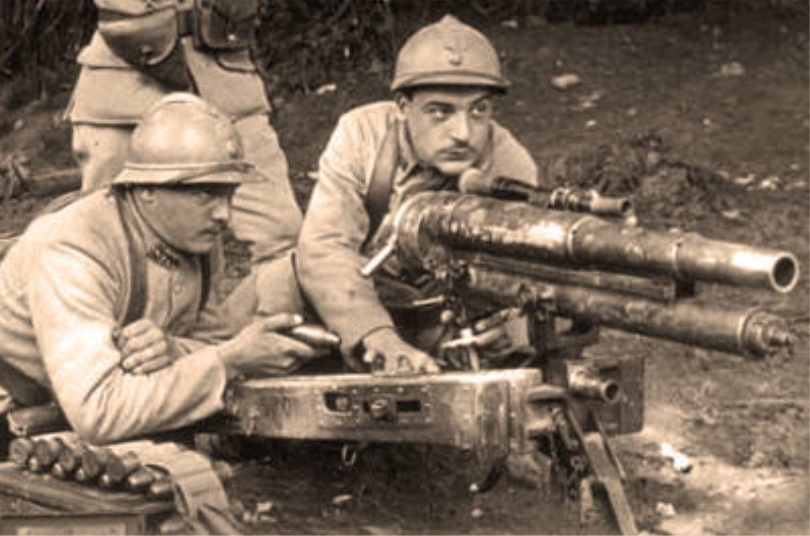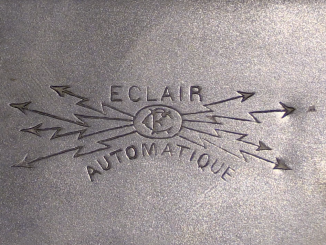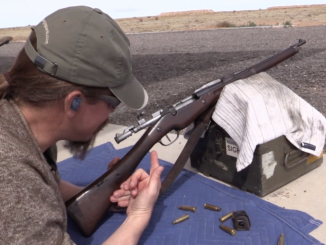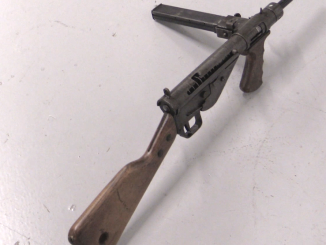We think the M1916 37mm cannon is just terribly cute. Here one is being used by French troops – note in particular the spare ammo in a belt. The same belt and ammunition was used in the Vickers Pompom guns, and the belts are virtually impossible to find today.





This is interesting. It’s funny that something with a slightly larger caliber is mounted under a lightweight shoulder fired rifle now days. Of course I’m sure this is throwing a heavier charge with greater force but still. The idea of the universal weapon has come a long way.
Similar in concept to the MK-19 AGL…only a slightly slower rate of fire. (HV grenades, vs the LV grenades on the M-203 underbarrel.)
No matter how things change, they still remain the same, eh?
Ever since I saw one of these in a book by C.B. Colby, in my elementary school library, back in the 1970’s, I have wanted one of these….just soooo cool….(siiiigh)
The US Army made good use of the M1916 as well.
Is that a telescopic sight?
Yep.
Turk
I loved C. B. Colby.
Dean
Same gun was used in French tanks. I think there was an even shorter version that was used in the M1917 Renault (American version was called the Six Ton tank). This version, or one like it, was used in most French medium tanks. There were several barrel lengths and a coaxial 7.5mm MG. One tank had one of these in a turret and a 75mm in a bow sponson, an idea the US copied for the M3 medium tank.
After the defeat of France, the Germans took the better French tanks and used them mostly for partisan suppression by second-line units, and the worse tanks had their turrets and guns donated to the Atlantic Wall. A lot of the “Tobruk” emplacements in Normandy had these kinds of guns, in tank turrets.
The US and UK 37mm/2 pdr was a descendant of this anemic thing. Many European nations used the 37mm and 45mm Krupp guns to fill the same tactical niche. None of these little popguns was much use against a 1939 tank, by 1945 they were hopeless. Against infantry, mortars give you a lot more firepower, too. The crew drills are harder and more training is required but mortars are a much more powerful weapon. The small-caliber AT gun has an accuracy edge over a smoothbore mortar, but the mortar lets you fire enough rounds to offset that.
In the summer of 1918, a group of soldiers of the 301st Tank Brigade, which I commanded, was having 37mm. gun practice which I was observing. One defective round exploded in the muzzle, wounding two or three men. The next round exploded in the breech, blowing the head off the gunner. The men were reluctant to fire the next round, so it was incumbent on me, as the senior officer present, to do so -in fact, I fired three rounds without incident. This restored the confidence of the men in the weapon.
I must admit that I have never in my life been more reluctant to pull a trigger.
George S. Patton, “War As I Knew It”. From the chapter entitled “Earning my pay”.
The comments above are interesting but not relevant. This was neither an antipersonnel nor antitank gun.
It was meant to destroy machine gun emplacements and small pillbox fortifications in infantry attacks, something it did rather successfully.